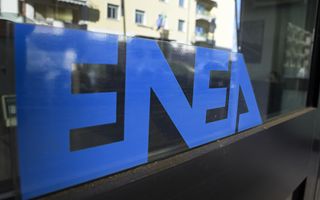(Finance) – Using coffee roasting waste as a high added value ingredient in baked products would allow the environmental impact of processing to be reduced by 73% and the disposal costs borne by companies to be halved. This is what emerges from one ENEA study on the economic and environmental sustainability of silverskin disposal, the main organic waste from coffee roasting, which roasters are obliged to transform into compost. The research was conducted within the framework of European Biocircularcities project and the results were published in the journal Sustainability.
“The life cycle analysis has highlighted that the food use of silverskin would allow us to avoid approximately 250 kg of CO2 equivalent for each ton of flour replaced with coffee bean waste, equal to a quantity of CO2 that can be absorbed from 22 trees. Instead, its valorization as compost determines the emission of approximately 236 kg of CO2 equivalent and its environmental impact is not compensated by the advantages of using the compost obtained instead of synthetic fertilizers”, he explains Giuliana Ansanelli, ENEA researcher and co-author of the study together with colleagues Gabriella Fiorentino and Amalia Zucaro of the ENEA Laboratory Technologies for the reuse, recycling, recovery and valorisation of waste and materials.
“On the economic front, the results of the Life Cycle Cost Analysis – he underlines Florentine – indicate that the Campania roasting company, analyzed in the study, can achieve a reduction of almost 60% in the costs linked to the disposal of silverskin, going from €448/ton to €190/ton, if valorised as a functional ingredient rather than as compost”.
In 2019 the agro-industrial sector of the Metropolitan City of Naples has generated approx 30 thousand tons of organic waste, of which almost 3% came from coffee roasting companies (largely silverskin). “Currently this organic waste is sent to composting plants, with high treatment costs. But in Campania there is a lack of infrastructure for the treatment of the organic fraction and therefore it would be desirable to identify alternative management methods for the coffee roasting waste, in agreement with the principles of the circular bioeconomy and industrial symbiosis, which allow us to reduce environmental impact, disposal costs borne by companies and the region and pressure on composting plants – he states Zucaro – Our study highlights precisely this: the use of silverskin in baked products could represent a valid solution that benefits not only the environment and the economy but also the health of consumers, given that it is rich in fiber (35%) , proteins (19%) and antioxidants”.
Despite the encouraging results on its use as a functional ingredient, the silverskin it must first pass the approval process to be used in commercial food products. To date, the procedure has not yet been completed, despite numerous studies having highlighted low risks and many benefits linked to its consumption.
